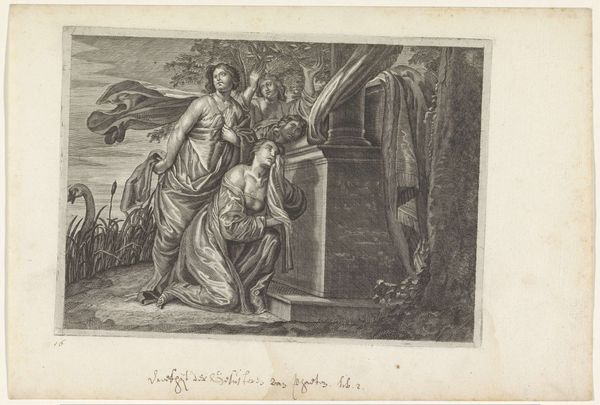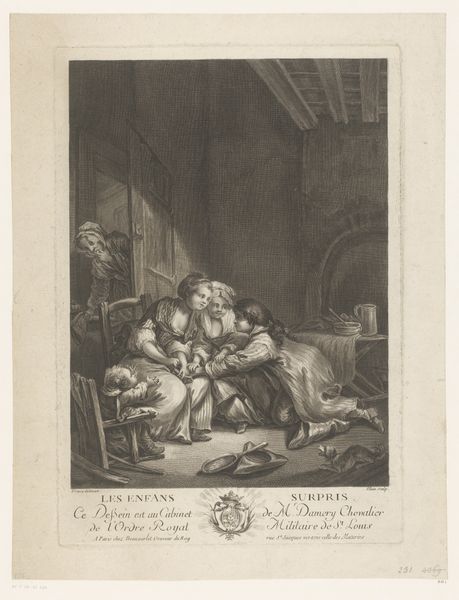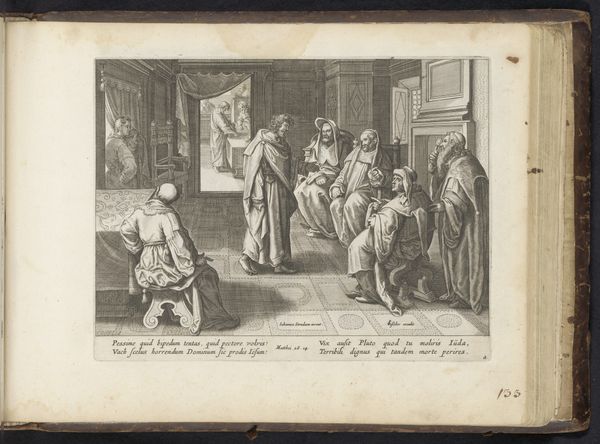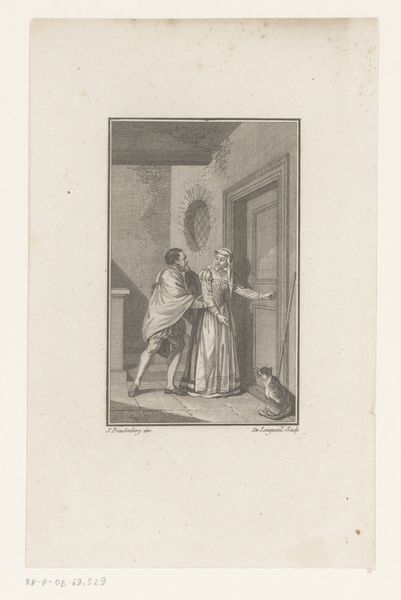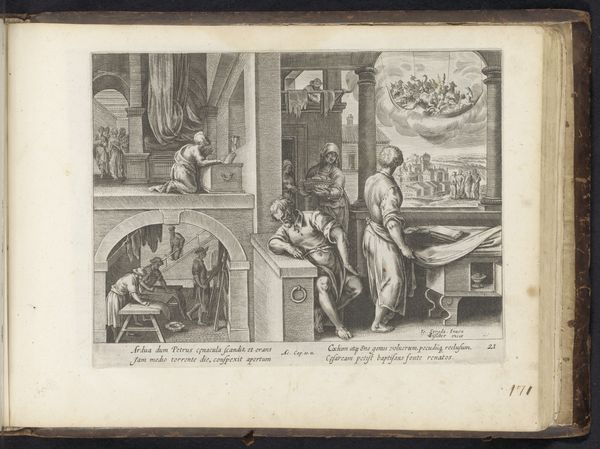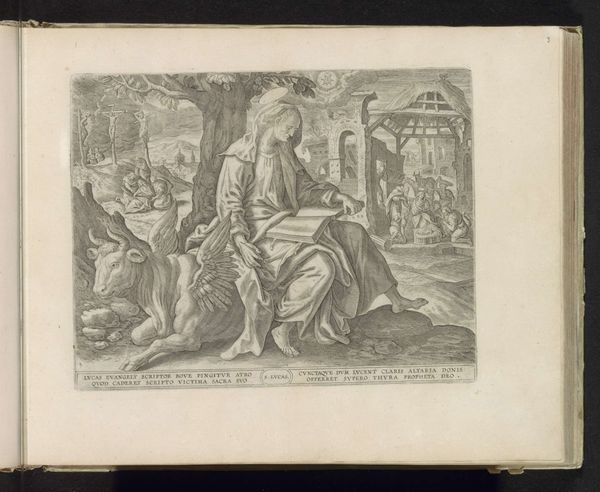
print, engraving
#
byzantine-art
#
aged paper
#
narrative-art
# print
#
old engraving style
#
figuration
#
history-painting
#
northern-renaissance
#
engraving
Dimensions: height 204 mm, width 237 mm
Copyright: Rijks Museum: Open Domain
Curator: Here we have "Koning Manasse in de gevangenis," or "King Manasse in Prison," an engraving created between 1547 and 1612 by Philips Galle, currently held here at the Rijksmuseum. Editor: It's a rather stark depiction, isn’t it? The subject seems weighed down, quite literally, by the chains, and the textures rendered by the engraving give a palpable sense of rough stone and worn fabric. Curator: Galle positions Manasse within a space that reflects not only physical imprisonment but also a spiritual one. Consider the socio-political context; prints like these served as powerful visual aids to interpret biblical narratives in a time of immense religious and political upheaval. Editor: Absolutely. Look at the figure of Manasse himself – the heavy chains, the bowed head. Galle really emphasizes the labor involved, both the literal labor of his captivity, and, potentially, the introspective labor of penance. There's a powerful contrast between the smooth planes of his clothing and the harsh texture of the prison walls. The making mirrors the meaning, doesn’t it? Curator: Indeed. The very act of engraving, the meticulous labor involved in transferring this scene onto a plate, then to paper, echoes Manasse's own journey of acknowledging his transgressions and turning toward repentance. The weight of history, the societal expectations of rulership… Galle's rendering resonates with complex tensions. He reigned for 55 years during which, the biblical books say, he led the people into idolatry. This print depicts the period in which the King of Assyria captured him. Editor: And the surrounding setting: there's also something interesting to be said about the open door— it serves to frame the potential violence or deliverance to come and invites discussion of how labor becomes a process of transformation and absolution. Curator: It speaks to the duality inherent in the human condition. Through art like this, Galle provokes contemplation of power, moral agency, and ultimately, the potential for redemption. Editor: Galle presents this complex figure in a relatively spare style of engraving, leaving the material components of the composition and process as very expressive features. Food for thought.
Comments
No comments
Be the first to comment and join the conversation on the ultimate creative platform.



